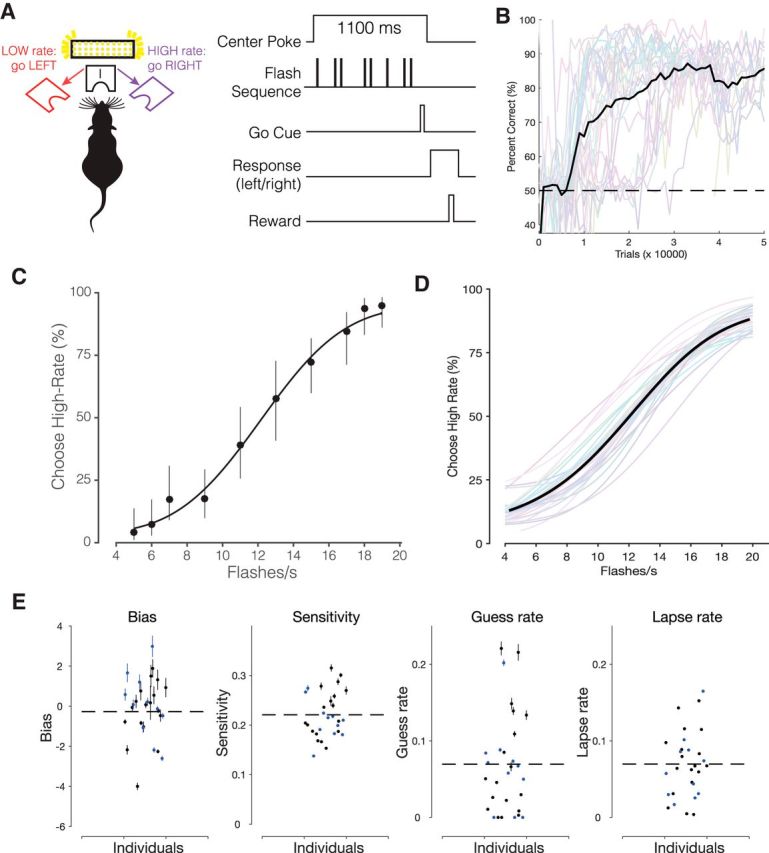Figure 1.

A dataset of over half a million trials demonstrates mice can be trained to make stable and reliable decisions about visual stimuli. A, Task schematic and trial structure of the three-port choice task. The mouse initiated trials and stimulus delivery by poking its nose into the center port. Mice reported whether stimuli were low-rate (left port) or high-rate (right port). Mice waited at the center port for at least 1100 ms, with the stimulus delivered after a variable delay (10–100 ms). At the end of the 1000 ms stimulus period, an auditory “Go” tone was played. Correct choices to the left or right were rewarded with a small drop of water (2 μl), incorrect choices were followed by a 2–3 s timeout. B, Percentage correct on easiest stimulus conditions (4 and 20 flashes/s) plotted across total trials experienced by the mouse. Individual mice: gray traces and average: black trace, 29 mice. Colors arbitrarily selected to facilitate distinguishing subjects. C, Psychometric function fit for individual mouse from single session (494 trials; Error bars indicate Wilson binomial confidence intervals), and (D) data from 29 mice averaged across multiple sessions (537,288 trials). Individual mice, Colored traces; average, black trace. E, Parameter values from the model fit for each mouse in the cohort. Error bars indicate SEM calculated via bootstrapping (Palamedes Toolbox). Blue points indicate the 11 animals that were used for additional manipulations (11/11 were used for optogenetic or control experiments and 10/11 were used for the brightness manipulation).
